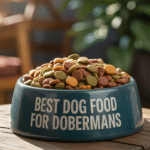Can Dogs Eat Shrimp? Understanding Their Nutritional Benefits and Risks
When it comes to the dining preferences of our furry companions, it’s common for pet owners to wonder, “can dogs eat shrimp?” Understanding the answer requires a look at both the nutritional benefits and potential risks associated with this seafood treat. Many dog owners enjoy sharing their meals with their pets, and shrimp can sometimes be included in this sharing. However, it’s important to know the specifics to keep your canine companion safe.
Nutritional Benefits of Shrimp for Dogs
Shrimp can be a source of nutrition for dogs when served in moderation and prepared correctly. Here are some of the benefits:
- High in Protein: Shrimp is rich in protein, which is essential for muscle development and overall health.
- Low in Calories: For dog owners monitoring their pet’s weight, shrimp is low in calories, making it a suitable treat.
- Rich in Omega-3 Fatty Acids: These fatty acids are beneficial for skin and coat health, helping to reduce shedding and maintain shine.
- Vitamins and Minerals: Shrimp contains nutrients like vitamin B12, selenium, and iodine, important for energy production and immune function.
Potential Risks of Feeding Shrimp to Dogs
While shrimp offers some benefits, there are risks that should be considered:
- Allergic Reactions: Some dogs may be allergic to shellfish. Watch for signs such as itching, swelling, or gastrointestinal upset.
- High Cholesterol: Shrimp is higher in cholesterol. It’s best for dogs with certain health issues, particularly heart-related problems, to avoid it.
- Preparation Matters: Shrimp should always be cooked without seasoning or additives, as garlic and onions can be toxic to dogs.
- Choking Hazard: Always ensure that shrimp is properly sized for your dog, especially if they are small. Remove the shells, tails, and any other hard parts.
How to Safely Prepare Shrimp for Your Dog
To safely include shrimp in your dog’s diet, follow these guidelines:
- Cook the shrimp by boiling, steaming, or grilling. Avoid frying and any methods that include oil or seasoning.
- Remove the shell and tail to eliminate choking hazards.
- Cut shrimp into small, manageable pieces that align with your dog’s size.
- Introduce shrimp slowly. Start with a small piece to see how your dog reacts.
How Much Shrimp Can Dogs Eat?
The amount of shrimp you can safely give to your dog depends on their size. As a general guideline, you can offer them:
| Dog Size | Recommended Amount of Shrimp |
|---|---|
| Small (under 15 lbs) | 1-2 small shrimp |
| Medium (15-30 lbs) | 2-3 small shrimp |
| Large (30-60 lbs) | 3-5 small shrimp |
| Extra Large (over 60 lbs) | 5-7 small shrimp |
Consult Your Veterinarian
Before introducing any new food, including shrimp, into your dog’s diet, it’s wise to consult with your veterinarian. They can provide guidance based on your dog’s specific health needs and dietary requirements. This is especially important if your dog has existing health issues or is on medication.
Shrimp can be an enjoyable treat for dogs when prepared and served correctly. Always prioritize your dog’s health and well-being when considering new foods. More information about safe foods for pets can be found at the American Kennel Club or the PetMD. These resources can provide additional insights into your dog’s dietary needs.
Safe Ways to Prepare Shrimp for Your Dog
When it comes to treating your furry friend, it’s important to ensure that the food you give them is safe and healthy. Shrimp can be a good protein option for dogs, but it must be prepared correctly. Here are safe ways to prepare shrimp for your dog, ensuring they enjoy a delicious treat without any health risks.
Choosing the Right Shrimp
First, it’s essential to select the right kind of shrimp. You should aim for fresh or frozen shrimp without any additives. Look out for these important points:
- Buy shrimp from reputable suppliers to ensure quality.
- Opt for plain shrimp, avoiding those with seasoning, butter, or sauces.
- For convenience, frozen shrimp can be a great option, just double-check the ingredients list.
Preparation Methods
Once you’ve chosen the right shrimp, it’s crucial to prepare it properly. Here are some safe methods to prepare shrimp for your dog:
- Boiling: Boil the shrimp in unsalted water for 2-3 minutes until they turn pink and opaque. Make sure they’re fully cooked to avoid any foodborne illness.
- Steaming: Steaming shrimp can preserve their nutrients while ensuring they are cooked thoroughly. Just steam them for about 5 minutes.
- Grilling: If you enjoy grilling, you can grill shrimp without any seasonings. Ensure they are not charred, as burnt food can be harmful to dogs.
- Baking: Bake the shrimp at 400°F (204°C) for 8-10 minutes. Avoid using any oils or seasonings.
Cooling and Cutting
After cooking, let the shrimp cool down before serving it to your dog. This is important because hot shrimp can burn your dog’s mouth and throat. Once cooled, remove the shell and tail completely, as these parts can be choking hazards.
Serving Suggestions
Now that your shrimp is ready, there are different ways to serve it to your dog:
- Mix it in their regular food to add flavor and protein.
- Serve it as a standalone treat for special occasions.
- Chop it into small, bite-sized pieces to make it more manageable for smaller breeds.
Frequency of Feeding Shrimp
While shrimp can be a healthy addition to your dog’s diet, it should be given in moderation. Here’s a general guideline to consider:
| Dog Size | Recommended Serving Size |
|---|---|
| Small Dogs | 1-2 shrimp per week |
| Medium Dogs | 2-4 shrimp per week |
| Large Dogs | 4-6 shrimp per week |
Signs of Allergies or Sensitivity
Like any new food, it’s essential to monitor your dog for signs of allergies or sensitivity after introducing shrimp into their diet. Symptoms can include:
- Vomiting or diarrhea
- Itching or skin irritations
- Excessive licking or chewing on paws
If you notice any of these signs, it’s best to consult with your veterinarian before continuing to feed them shrimp.
Shrimp can be a tasty and nutritious treat for your dog when prepared safely. Ensure you choose quality shrimp, cook it without any seasonings, and monitor your dog’s reaction after trying it for the first time. With these guidelines, your dog can enjoy a delightful seafood treat safely.
For more information on safe food options for your pets, visit AKC Nutrition and ASPCA – Human Foods Safe for Animals.
Common Allergies: Can Dogs Be Allergic to Shrimp?
When considering your dog’s diet, you might wonder about various foods, including seafood like shrimp. While shrimp can be a tasty treat for humans, you might ask yourself, “Can dogs be allergic to shrimp?” Understanding your dog’s nutritional needs and potential allergies is essential for their overall health.
Understanding Allergies in Dogs
Just like humans, dogs can suffer from allergies too. Allergies occur when the immune system overreacts to a substance it deems harmful. Common allergens for dogs include:
- Pollen
- Dust mites
- Certain foods
- Fleas
Food allergies are particularly concerning for dog owners, as they can lead to various health issues. Seafood, including shrimp, is one potential allergen that can provoke a reaction in some dogs.
Can Dogs Be Allergic to Shrimp?
The answer is yes; some dogs can develop an allergy to shrimp. Although shrimp is safe for many dogs in moderation, it can trigger allergic reactions in those who are sensitive to shellfish. Symptoms of a shrimp allergy in dogs may include:
- Itchy skin
- Red or inflamed skin
- Hot spots
- Gastrointestinal issues (vomiting or diarrhea)
- Swelling of the face or ears
If you notice any of these symptoms after feeding your dog shrimp, consult your veterinarian immediately.
Identifying a Shrimp Allergy
To determine if your dog is allergic to shrimp, you can consider the following steps:
- Remove shrimp from their diet: Cease feeding shrimp for a couple of weeks, then reintroduce it in small amounts.
- Observe: Watch for any allergic reactions over a few days after reintroduction. If symptoms appear, it may indicate an allergy.
- Consult a veterinarian: Seek professional advice for testing or alternative dietary suggestions if the allergy is suspected.
It’s important never to assume a dog can tolerate a particular food. What works for one dog may not work for another.
Risks of Feeding Shrimp to Dogs
While not all dogs are allergic, there are risks associated with feeding shrimp, even if your dog does not show immediate signs of allergy. These include:
- Choking hazard: Shrimp can be a choking hazard, especially if served whole.
- Digestive issues: Some dogs might have difficulty digesting shrimp, leading to diarrhea or upset stomach.
- High sodium content: Shrimp prepared with seasoning can be dangerous, as sodium can lead to health issues in dogs.
Benefits of Shrimp for Dogs
If your dog does not have an allergy to shrimp, there can be some benefits. Shrimp is low in calories and high in protein, which can be a healthy addition to their diet. Additionally, shrimp contains omega-3 fatty acids, which can help promote a healthy coat and skin.
Safe Preparation of Shrimp for Dogs
If you decide to treat your dog with shrimp, ensure it is cooked thoroughly and prepared without any seasoning. Here’s how you can prepare it safely:
- Boil or steam shrimp without added salt or spices.
- Remove the shell and veins.
- Cut into small, bite-sized pieces to prevent choking.
Introduce shrimp gradually to your dog’s diet and always monitor for any signs of allergies.
Health and safety should always come first when treating your dog with new foods. If in doubt, seek advice from a veterinarian.
For more information about pet allergies and dietary recommendations, consider visiting AKC or ASPCA.
Your dog’s health is paramount. By understanding the risks and benefits of different foods like shrimp—including potential allergies—you can help keep your furry friend happy and healthy.
Alternative Seafood Options for Your Dog’s Diet
When considering seafood options for your furry friend, many dog owners wonder about the best choices. Seafood can be a healthy addition to your dog’s diet, providing essential nutrients and omega-3 fatty acids. However, it’s important to choose safe alternatives that are both nutritious and delicious. Here are some great seafood options you can consider integrating into your dog’s diet.
Fish
Fish is an excellent source of protein and is rich in omega-3 fatty acids. These nutrients can help improve your dog’s coat and skin health. Here are some safe fish options:
- Salmon: Packed with omega-3 fatty acids, salmon can promote a shiny coat and healthy skin. Just ensure it is fully cooked and free from bones.
- Pollock: This white fish is low in fat and high in protein. Pollock is often used in dog foods and treats.
- Sardines: These small fish are full of nutrients and can be served canned in water (without added salt) or fresh. They are also high in calcium.
- Trout: Another fish rich in omega-3s, trout can be a great option if cooked properly.
Shelled Seafood
The shelled variety of seafood, like shrimp and crab, can also be included, but you should be cautious about preparation:
- Shrimp: Shrimp is safe for dogs and can be a tasty treat. However, ensure they are cooked and deveined before serving.
- Crab: Crab meat occasionally provides omega-3s but should be given in moderation due to its high sodium content.
Benefits of Seafood for Dogs
Including seafood in your dog’s diet can offer numerous benefits:
- Improves Joint Health:
- The omega-3 fatty acids found in seafood can help reduce inflammation and support joint health, particularly in older dogs.
- Boosts Immune Function:
- The nutrients in seafood can help strengthen your dog’s immune system, potentially keeping them healthier.
- Enhances Coat Quality:
- Many dog owners notice a shinier and healthier coat when incorporating fish into their pet’s diet.
Considerations When Feeding Seafood to Your Dog
While seafood can be a healthy addition to your dog’s diet, there are a few important considerations to keep in mind:
- Always cook seafood thoroughly to eliminate harmful bacteria or parasites.
- Watch for any allergic reactions. Introduce any new food slowly and observe your dog for any changes.
- Avoid serving fish with bones, as they can pose a choking hazard or cause digestive issues.
- Limit portions to avoid excessive calorie intake, especially for smaller breeds.
Alternative Protein Sources
If your dog doesn’t like fish or has allergies, there are other protein options to consider:
- Chicken: Lean and nutritious, chicken is often a favorite among dogs.
- Beef: Ground beef or lean cuts can provide necessary nutrients for your dog.
- Turkey: A great alternative for protein without too many calories.
Where to Find Quality Seafood for Dogs
When purchasing seafood for your dog, it’s essential to source high-quality, fresh ingredients. Here are a few options:
- Local fish markets often provide fresh, wild-caught seafood.
- Pet supply stores may offer treats or meals made with fish.
- Online retailers specializing in pet food may also sell quality seafood options.
For expert recommendations on your dog’s diet, check resources like AKC’s article on Fish for Dogs or consult with your veterinarian for personalized advice.
Seafood into your dog’s meal plan can be a rewarding experience for both you and your furry friend. With careful selection and preparation, you can ensure that your dog enjoys these healthier alternatives while reaping the benefits along the way.
Signs Your Dog May Have a Seafood Allergy or Sensitivity
If you’ve recently introduced seafood into your dog’s diet, it’s important to keep an eye out for any signs of a possible allergy or sensitivity. Although many dogs enjoy fish and shellfish, not all dogs can safely eat these foods without experiencing reactions. Understanding the symptoms can help you keep your furry friend healthy and comfortable.
One of the primary signs of a seafood allergy in dogs is skin irritation. If you notice your dog scratching, biting, or licking their skin more than usual, it could be an indicator. You may also see:
- Red or inflamed skin: Areas might become hot to the touch.
- Dry or flaky patches: Look for dandruff-like substances.
- Hair loss: In some cases, this may occur around irritated areas.
Digestive problems are another potential sign that your dog may be allergic to seafood. Watch for symptoms such as:
- Vomiting: Frequent or sudden vomiting can occur.
- Diarrhea: Loose bowel movements or changes in stool consistency.
- Gas: Excessive bloating or flatulence may also be present.
Observe your dog for any changes in behavior, especially after eating seafood. Affected dogs might become less active or show signs of discomfort. Common behavioral changes can include:
- Increased lethargy: Your dog might seem less interested in play.
- Avoiding food: A sudden aversion to meals may occur.
- Whining or vocalizing: Your dog may communicate discomfort in this way.
In some cases, respiratory issues could arise. Though less common, signs such as coughing, sneezing, or wheezing might indicate an allergy. You should seek veterinary advice if you observe these symptoms, especially if they worsen over time.
If you suspect that your dog has a seafood allergy or sensitivity, keep a food diary. Document what they eat and when they show signs of discomfort. This practice can be beneficial in identifying patterns and pinpointing problematic ingredients. A detailed log can assist your veterinarian in making an accurate diagnosis.
Your veterinarian may recommend allergy testing or elimination diets to confirm the seafood allergy. An elimination diet involves removing all seafood products from your dog’s diet for a specified period, typically around 8 to 12 weeks. Once the symptoms resolve, you can reintroduce seafood gradually and monitor for any returning reactions.
The following table provides a simplified overview of common seafood allergies and their potential symptoms:
| Type of Seafood | Common Symptoms |
|---|---|
| Shrimp | Skin irritation, vomiting, excessive itching |
| Salmon | Diarrhea, lethargy, respiratory issues |
| Tuna | Scratching, hair loss, abdominal pain |
It’s essential to be aware of your dog’s complete diet, especially if they are taking any supplements or treats that may contain seafood ingredients. Cross-contamination may also occur in shared kitchens if you’re cooking seafood for yourself. If you’re unsure about the content of a specific food item, consult your veterinarian or consider alternatives.
If you confirm that your dog is allergic to seafood, discussing dietary alternatives with your veterinarian is vital. There are numerous dog food brands that provide balanced nutrition without fish or shellfish. Some options include chicken, beef, lamb, or even pea-based diets. Ensuring that your dog has a varied diet will help maintain their health and prevent any allergic reactions.
For more detailed information about food allergies in dogs, you can visit the AKC website or consult resources like Heart of Pets for additional dietary guidance.
Conclusion
Ultimately, the question of whether dogs can eat shrimp is nuanced and requires careful consideration. Shrimp can offer a variety of nutritional benefits, such as protein, omega-3 fatty acids, and essential vitamins that may enhance your dog’s health. However, it’s crucial to be aware of the potential risks involved, including allergies and the safe ways to prepare this seafood.
If you choose to introduce shrimp into your dog’s diet, always cook it thoroughly and avoid using any seasoning or oils that could be harmful. Keep an eye on portion sizes to avoid any gastrointestinal upsets, and consider starting with a small amount to monitor for any adverse reactions.
It’s also important to recognize that some dogs may have seafood allergies, including reactions to shrimp. Be vigilant for any signs, such as itching, swelling, or gastrointestinal distress, especially if shrimp is a new addition to their diet. If you see these symptoms, consult your veterinarian promptly for advice.
If your dog exhibits an allergy or if shrimp isn’t a suitable option, don’t worry! There are plenty of alternative seafood options that can be both safe and delicious for your furry friend. Fish, such as salmon or sardines, can provide similar nutritional benefits without the risks associated with shrimp.
Educating yourself on your dog’s dietary needs and preferences will ultimately enable you to make informed choices. Keeping your dog’s health, safety, and happiness in mind ensures they enjoy a varied and balanced diet while preventing any uncomfortable reactions.















Leave a Reply